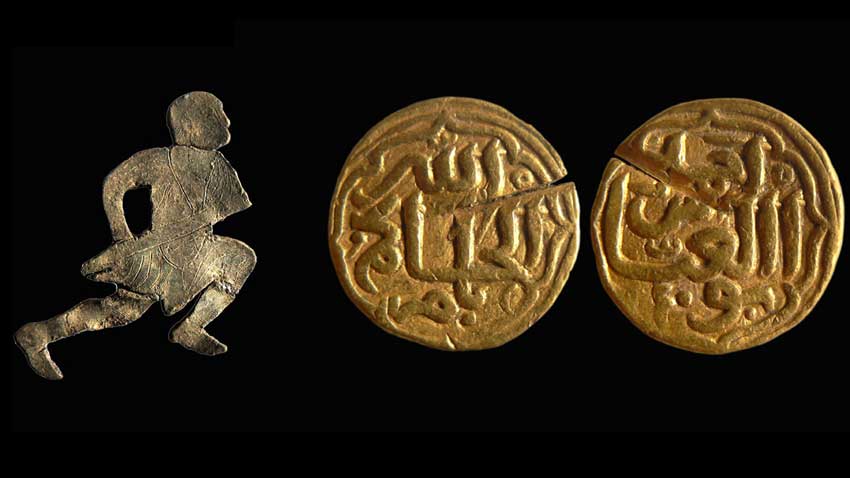The archaeological survey of the Medieval Bulgarian fortress of Urvich near the capital Sofia has been going on this year as well. The St. Ilia monastery has been researched in the course of the excavations, mentioned in Istorya Slavyanobolgarskaya (Slav-Bulgarian History) of monk Paisius of Hilendar – a work that played a huge role for the National Revival in the years of the Ottoman rule. “The only concrete toponym, pointed out in the book is the Urvich Fortress with a monastery, situated in the canyons near Sredetz /Sofia’s medieval name/,” says archaeologist Prof. Nikolay Ovcharov. He heads the excavations, along with Associate Prof. Boni Petrunova. The monastery was demolished end-18 c., during the Austrian – Turkish War.
This year’s findings at Urvich belong to different time periods, which is easy to be explained. There used to be a fortress there from the late Antiquity in the 5th c. An interesting flat image made of lead of a warrior in attack was found there, along with coins form that time. A silver aspra coin from the rule of Bulgarian Tsar Ivan-Alexander /1331 – 1371/ was among the artifacts, along with a woman’s decoration for the head. However, the most majestic object is the big gold coin, coming from the court of Indian Sultan Muhammad bin Tughluq /1325 – 1351/. The latter was famous with the fact that he managed to unite India – despite the 22 uprisings against him. However, the big sultanate fell apart after his death in 1351. The curious thing is that the ruler was close to the Sufi – the ascetic mystics. How did the coin come here anyway? According to Nikolay Ovcharov the most probable version is that after Timor conquered India and continued with his expansion to the West the coin came with the arrival of his warriors to Asia Minor, or relatively close to the Bulgarian lands.

The research has been funded under the Culture program of Sofia Municipality. The initiative for the revealing of the monastery belongs to the Kopam BG NGO for archaeological research and environmental protection of archaeological monuments. The National Museum of History has been taking part in the project as of this year too. Students and lecturers from 4 universities took part in the excavations: the ones in Sofia, Shumen, Plovdiv and from New Bulgarian University in the capital.
“We are really thankful to the team that has been researching this really interesting fortress for years and with a great success, we can’t hide it,” says Todor Chobanov, deputy mayor of Sofia Municipality. “The spot is one of the most interesting ones, as it combines different époques – from late Antiquity to the very interesting Medieval Ages in Bulgaria. Sofia Municipality has been systematically developing this and other projects, being fully aware of the fact that one day these places should be among the tourist attractions of the city, part of the major complex of Sofia Mount Athos.”
According to the Director of the National Museum of History Bozhidar Dimitrov, the Urvich Fortress should be restored, at least partially. The church should be restored as well, in order to become a temple, which serves to God.
English version: Zhivko Stanchev
On the road leading from Sofia to Samokov upstream the Iskar River near the big picturesque bend between the former villages of Kokalyane and Pasarel at the Devil's Bridge is the Srednoberdie Ridge. There the Vedena River flows into the Iskar and the..
The Bulgarian Orthodox church marks the assumption of St. Anna – the saint who gave birth to Maria, the future mother of Jesus Christ. Christians in Bulgaria mark Day of St. Anne - patron of motherhood St. Anna is considered to be the..
During rescue excavations, 17 burial facilities were discovered in the necropolis of the Roman colony of Ulpia Ratiaria (near Archar village in the region of Vidin), of which five tombs and 12 pit graves. This was announced by Zdravko..

+359 2 9336 661
